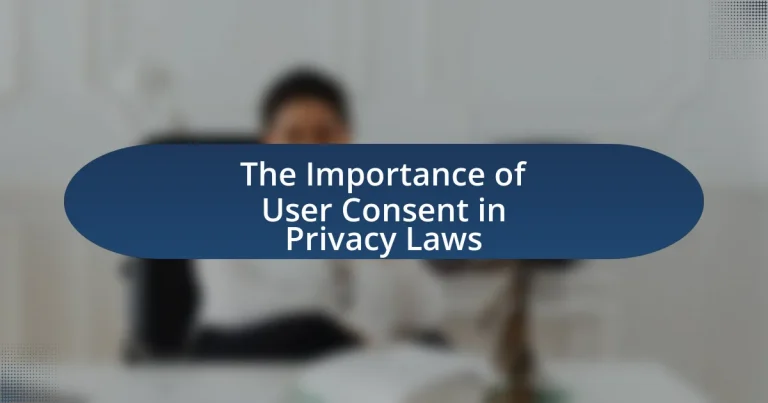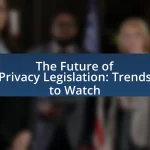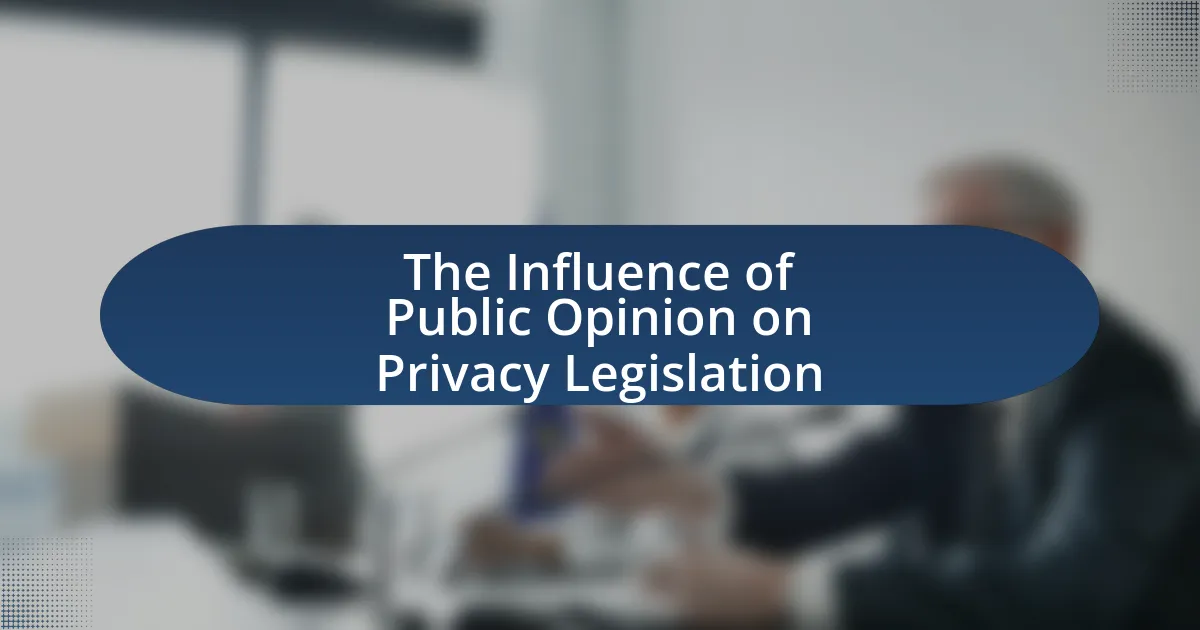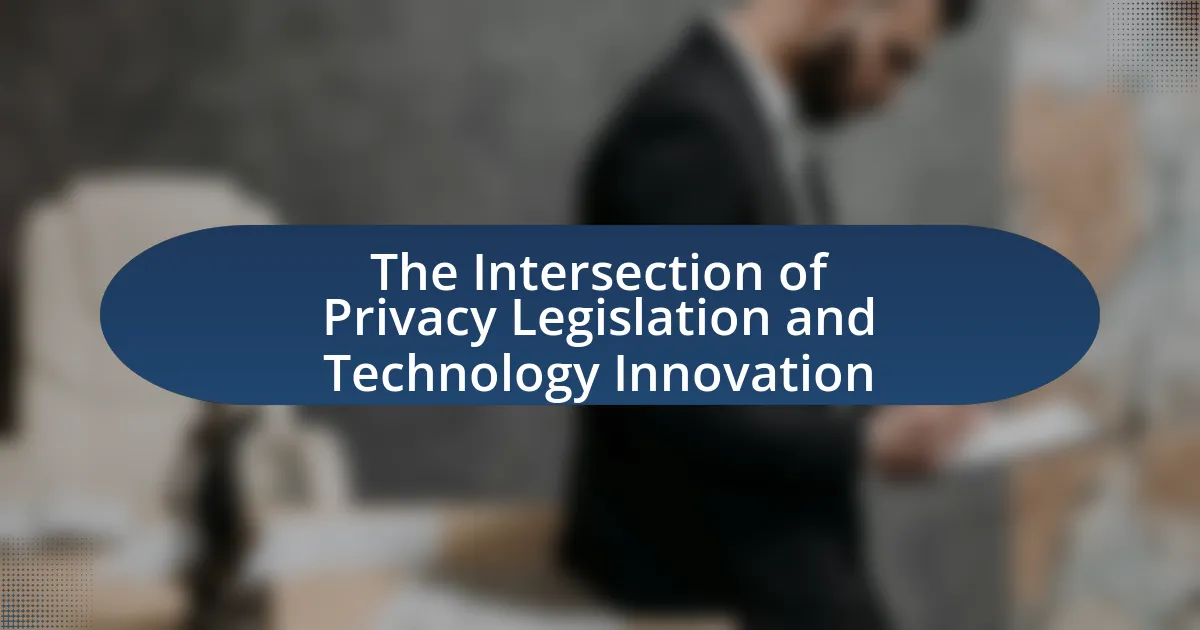User consent is a fundamental aspect of privacy laws, empowering individuals to control their personal information and ensuring compliance with regulations such as the General Data Protection Regulation (GDPR) and the California Consumer Privacy Act (CCPA). These laws mandate that organizations obtain explicit consent before processing personal data, fostering transparency and trust while protecting individual privacy rights. The article explores the significance of user consent, the legal frameworks that emphasize it, the challenges in obtaining informed consent, and the implications of inadequate consent for organizations. Additionally, it discusses best practices for ensuring effective consent processes and the future trends in user consent and privacy regulations.
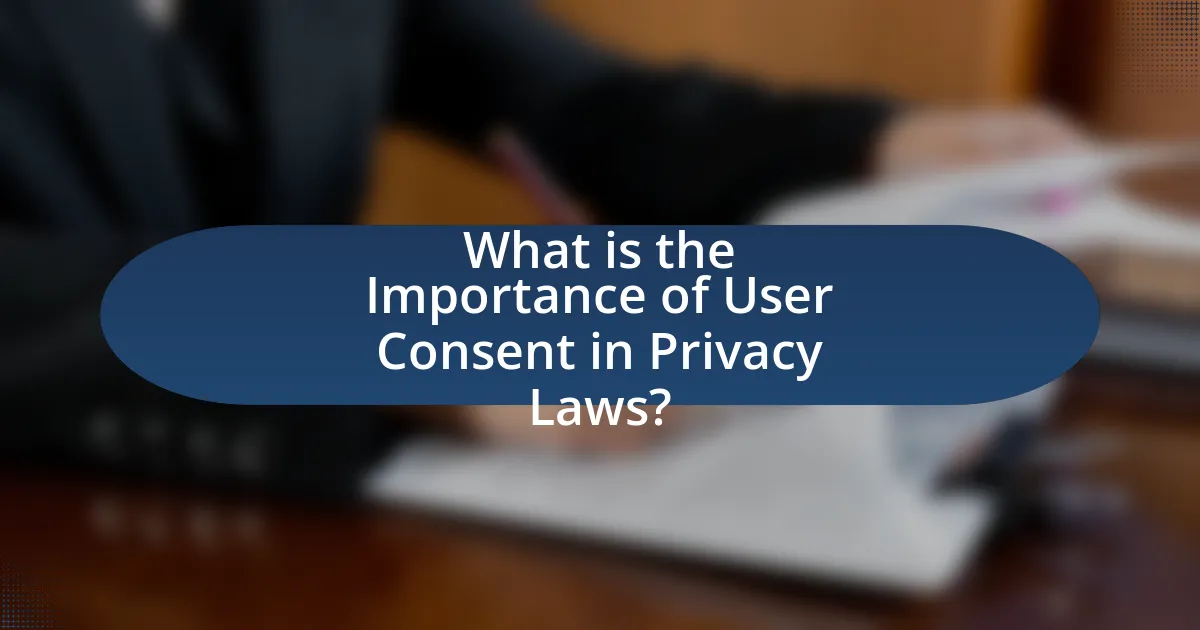
What is the Importance of User Consent in Privacy Laws?
User consent is crucial in privacy laws as it empowers individuals to control their personal information. This control is foundational to data protection regulations, such as the General Data Protection Regulation (GDPR), which mandates that organizations must obtain explicit consent from users before processing their data. The requirement for consent ensures transparency and fosters trust between users and organizations, as individuals are informed about how their data will be used. Furthermore, consent mechanisms help prevent unauthorized data access and misuse, thereby enhancing user privacy and security.
Why is user consent a fundamental aspect of privacy laws?
User consent is a fundamental aspect of privacy laws because it empowers individuals to control their personal information and how it is used. Privacy laws, such as the General Data Protection Regulation (GDPR) in the European Union, mandate that organizations must obtain explicit consent from users before collecting or processing their data. This requirement is rooted in the principle of autonomy, which recognizes that individuals have the right to make informed decisions about their personal information. The GDPR states that consent must be freely given, specific, informed, and unambiguous, ensuring that users are fully aware of what they are agreeing to. This legal framework not only protects individual privacy rights but also fosters trust between users and organizations, as it establishes clear expectations regarding data handling practices.
What legal frameworks emphasize user consent?
Legal frameworks that emphasize user consent include the General Data Protection Regulation (GDPR) in the European Union and the California Consumer Privacy Act (CCPA) in the United States. The GDPR mandates that organizations must obtain explicit consent from users before processing their personal data, ensuring that individuals have control over their information. Similarly, the CCPA requires businesses to inform consumers about the data collected and allows them to opt-out of the sale of their personal information, reinforcing the importance of user consent in data privacy. These regulations highlight the necessity of obtaining informed consent to protect user rights and privacy.
How does user consent protect individual privacy rights?
User consent protects individual privacy rights by ensuring that individuals have control over their personal information and how it is used. When users provide explicit consent, they are actively participating in the decision-making process regarding their data, which aligns with privacy laws such as the General Data Protection Regulation (GDPR). The GDPR mandates that consent must be informed, specific, and freely given, thereby reinforcing the individual’s right to privacy. This legal framework establishes that organizations must obtain clear permission before processing personal data, thereby safeguarding individuals from unauthorized use and potential exploitation of their information.
How does user consent impact data collection practices?
User consent significantly impacts data collection practices by establishing the legal and ethical framework within which organizations can gather and utilize personal information. When users provide explicit consent, it legitimizes the data collection process and ensures compliance with privacy laws such as the General Data Protection Regulation (GDPR), which mandates that consent must be informed, specific, and revocable. For instance, under GDPR, organizations must demonstrate that they have obtained clear consent from users before processing their data, which directly influences how data is collected, stored, and shared. This requirement not only protects user privacy but also fosters trust between users and organizations, as users are more likely to engage with services that respect their consent preferences.
What are the implications of obtaining consent for data processing?
Obtaining consent for data processing has significant legal and ethical implications. Legally, consent serves as a foundational requirement under regulations such as the General Data Protection Regulation (GDPR), which mandates that organizations must obtain explicit consent from individuals before processing their personal data. This requirement ensures that individuals have control over their personal information and can make informed decisions about its use. Ethically, obtaining consent fosters trust between organizations and users, as it demonstrates respect for user autonomy and privacy. Furthermore, failure to obtain proper consent can lead to legal repercussions, including fines and damage to an organization’s reputation, as evidenced by the enforcement actions taken against companies that violate consent requirements under GDPR.
How can organizations ensure informed consent from users?
Organizations can ensure informed consent from users by providing clear, concise, and accessible information about data collection practices. This includes detailing what data is being collected, how it will be used, and the potential risks involved. According to the General Data Protection Regulation (GDPR), consent must be freely given, specific, informed, and unambiguous, which means organizations must avoid complex legal jargon and present information in a straightforward manner. Additionally, organizations should implement mechanisms for users to easily withdraw consent at any time, reinforcing the user’s control over their personal data. This approach aligns with best practices in privacy laws and enhances user trust.
What challenges exist in obtaining user consent?
Obtaining user consent faces several challenges, primarily due to complexity, ambiguity, and user awareness. The complexity arises from legal jargon and lengthy privacy policies that users often do not fully understand, leading to uninformed consent. Ambiguity in what users are consenting to can create confusion, as terms and conditions may not clearly outline data usage. Additionally, many users lack awareness of their rights and the implications of their consent, which can result in passive acceptance of terms without genuine understanding. According to a study by the Pew Research Center, 79% of Americans express concern about how their data is being used, highlighting the gap between user awareness and informed consent.
What are common misconceptions about user consent?
Common misconceptions about user consent include the belief that consent is a one-time event, that it can be assumed through inactivity, and that all consent is equally valid regardless of context. Consent is not a one-time event; it must be ongoing and can be revoked at any time, as established by regulations like the General Data Protection Regulation (GDPR). Additionally, assuming consent through inactivity contradicts the principle of explicit consent, which requires clear affirmative action from the user. Lastly, not all consent is equally valid; for instance, consent obtained under duress or without adequate information is not legally binding, as highlighted in various legal frameworks that emphasize informed consent.
How do cultural differences affect perceptions of consent?
Cultural differences significantly affect perceptions of consent by shaping individuals’ understanding of autonomy, communication styles, and social norms. For instance, in individualistic cultures, such as the United States, consent is often viewed as a personal right that emphasizes explicit agreement and individual choice. Conversely, in collectivist cultures, like many Asian societies, consent may be interpreted through the lens of group harmony and relational dynamics, where implicit understanding and non-verbal cues play a crucial role. Research by the World Health Organization indicates that these cultural frameworks can lead to varying interpretations of what constitutes valid consent, impacting legal standards and personal interactions across different societies.
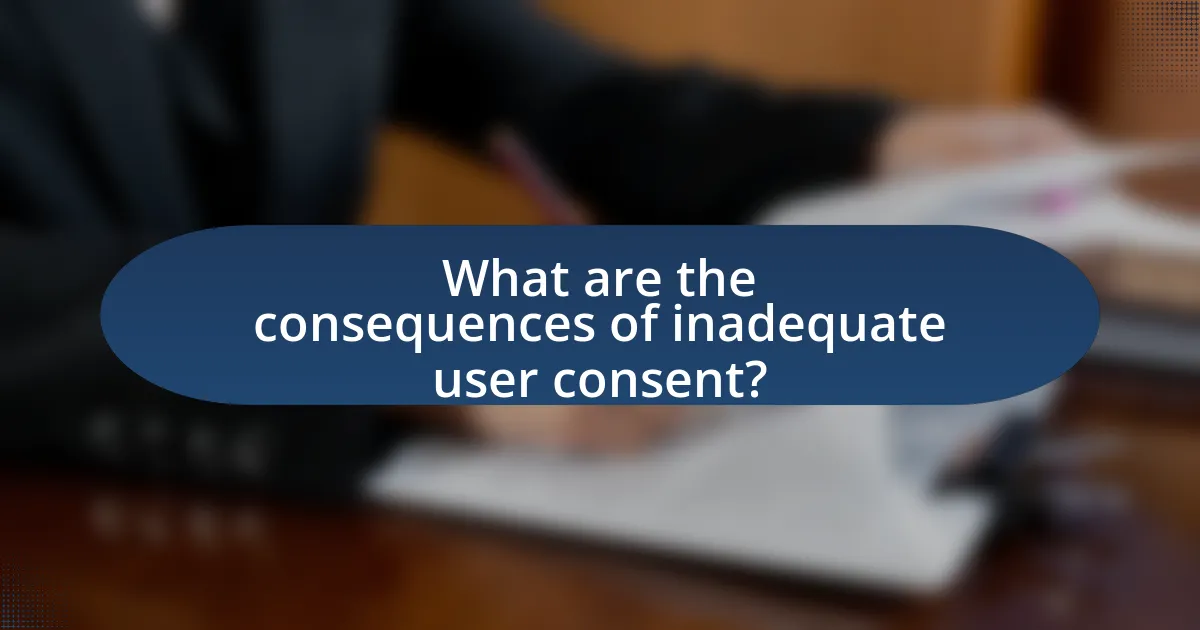
What are the consequences of inadequate user consent?
Inadequate user consent can lead to significant legal and ethical consequences for organizations. When users do not provide informed consent, companies may violate privacy laws such as the General Data Protection Regulation (GDPR), which mandates explicit consent for data processing. This can result in hefty fines; for instance, GDPR allows penalties of up to 4% of a company’s global annual revenue. Additionally, inadequate consent can damage an organization’s reputation, eroding customer trust and leading to loss of business. Furthermore, it can expose organizations to lawsuits from users whose data rights have been infringed, resulting in costly legal battles and settlements.
What legal repercussions can arise from failing to obtain consent?
Failing to obtain consent can lead to significant legal repercussions, including civil lawsuits, regulatory fines, and criminal charges. For instance, under the General Data Protection Regulation (GDPR), organizations that process personal data without consent can face fines up to 4% of their annual global turnover or €20 million, whichever is higher. Additionally, individuals may file lawsuits for damages resulting from unauthorized use of their personal information, which can result in substantial financial liability for the offending party. These legal frameworks underscore the critical importance of obtaining explicit consent to avoid severe penalties and protect individual rights.
How do regulatory bodies enforce consent requirements?
Regulatory bodies enforce consent requirements through a combination of legal frameworks, audits, and penalties. For instance, the General Data Protection Regulation (GDPR) mandates that organizations obtain explicit consent from individuals before processing their personal data, and regulatory bodies like the European Data Protection Board monitor compliance through regular audits. Non-compliance can result in significant fines, as seen in cases where companies have been penalized millions of euros for failing to secure proper consent. This enforcement mechanism ensures that organizations adhere to consent requirements, thereby protecting user privacy.
What are the potential financial penalties for non-compliance?
Potential financial penalties for non-compliance with privacy laws can be substantial, often reaching millions of dollars. For instance, under the General Data Protection Regulation (GDPR), organizations can face fines of up to €20 million or 4% of their annual global turnover, whichever is higher. Similarly, the California Consumer Privacy Act (CCPA) imposes fines of up to $7,500 per violation, which can accumulate rapidly if multiple violations occur. These penalties serve as a deterrent to ensure compliance with user consent requirements in privacy laws.
How does inadequate consent affect user trust?
Inadequate consent significantly undermines user trust by creating a perception of exploitation and lack of transparency. When users feel that their consent is not fully informed or freely given, they are less likely to trust the entity handling their data. Research indicates that 86% of consumers are concerned about data privacy, and inadequate consent practices can exacerbate these concerns, leading to a decline in user engagement and loyalty. Furthermore, studies show that organizations perceived as respecting user consent enjoy higher levels of trust and customer retention, highlighting the critical link between consent practices and user confidence.
What role does transparency play in building user trust?
Transparency is crucial in building user trust as it fosters an environment of openness and accountability. When organizations clearly communicate their data practices, users feel more secure in how their information is handled. A study by the Pew Research Center found that 79% of Americans are concerned about how their data is used by companies, indicating that transparency can alleviate these concerns by providing clarity on data usage. Furthermore, transparency in privacy policies and consent mechanisms enhances user confidence, leading to increased engagement and loyalty.
How can breaches of consent lead to reputational damage?
Breaches of consent can lead to significant reputational damage for organizations by eroding trust among users and stakeholders. When individuals discover that their personal information has been used without their explicit permission, they often feel violated and may publicly express their dissatisfaction, leading to negative publicity. For instance, a study by the Ponemon Institute found that 75% of consumers would stop using a company’s services after a data breach, highlighting the direct correlation between consent violations and loss of customer loyalty. Additionally, regulatory penalties and legal actions stemming from consent breaches can further tarnish an organization’s image, as seen in cases like the Facebook-Cambridge Analytica scandal, which resulted in a substantial decline in user trust and a $5 billion fine. Thus, breaches of consent not only damage reputations but also have tangible financial repercussions.
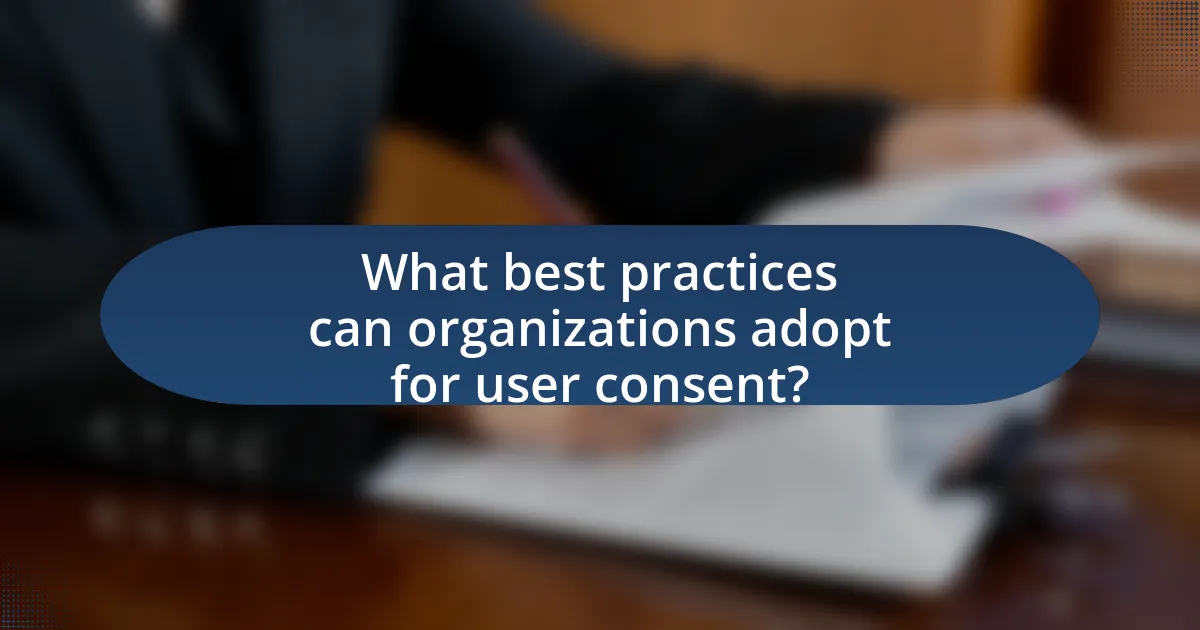
What best practices can organizations adopt for user consent?
Organizations can adopt several best practices for user consent, including clear communication, granular consent options, and regular audits. Clear communication ensures that users understand what they are consenting to, which is essential for compliance with privacy laws like GDPR. Granular consent options allow users to choose specific types of data they are comfortable sharing, enhancing user trust and engagement. Regular audits help organizations assess their consent processes and ensure they remain compliant with evolving regulations. These practices not only align with legal requirements but also foster a culture of transparency and respect for user privacy.
How can organizations create clear consent forms?
Organizations can create clear consent forms by using straightforward language, ensuring transparency about data usage, and providing specific options for consent. Clear language minimizes misunderstandings, while transparency builds trust by informing users how their data will be used, shared, and stored. Specific options allow users to make informed choices, such as opting in or out of particular data uses. Research indicates that clear consent forms enhance user comprehension and compliance with privacy laws, as seen in studies by the International Association of Privacy Professionals, which highlight that organizations with clear consent practices experience higher user engagement and satisfaction.
What elements should be included in a consent form?
A consent form should include the following elements: a clear statement of purpose, detailed description of the procedures involved, potential risks and benefits, confidentiality assurances, the right to withdraw consent, and contact information for questions. Each of these elements ensures that individuals are fully informed about what they are consenting to, which is essential for ethical compliance in privacy laws. For instance, the inclusion of a right to withdraw consent is mandated by regulations such as the General Data Protection Regulation (GDPR), which emphasizes user autonomy and informed decision-making.
How can organizations simplify consent processes for users?
Organizations can simplify consent processes for users by implementing clear, concise, and user-friendly consent forms. By using plain language and avoiding legal jargon, organizations can enhance user understanding and engagement. Research indicates that simplified consent forms increase user compliance, as seen in a study by the University of California, Berkeley, which found that 70% of participants preferred straightforward consent options over complex legal language. Additionally, organizations can utilize interactive tools, such as toggle switches for specific consent choices, which allow users to easily manage their preferences. This approach not only streamlines the process but also fosters trust and transparency, essential components in the realm of privacy laws.
What strategies can enhance user understanding of consent?
Clear and concise communication is essential to enhance user understanding of consent. Strategies include using plain language to explain consent terms, providing visual aids like infographics to illustrate the consent process, and implementing interactive tools such as quizzes to reinforce understanding. Research indicates that users are more likely to comprehend consent when information is presented in a straightforward manner, as evidenced by a study published in the Journal of Medical Internet Research, which found that simplified consent forms increased user comprehension by 40%. Additionally, offering examples of how consent applies in real-world scenarios can further clarify its importance, making the concept more relatable and easier to grasp.
How can visual aids improve consent comprehension?
Visual aids can significantly enhance consent comprehension by simplifying complex information and making it more accessible. Research indicates that individuals process visual information faster and retain it better than text alone; for instance, studies show that visuals can improve understanding by up to 89% compared to written explanations. By using diagrams, infographics, or videos, consent forms can clarify terms and conditions, ensuring users grasp their rights and obligations. This approach not only aids in comprehension but also fosters informed decision-making, which is crucial in the context of privacy laws.
What role does user education play in the consent process?
User education is crucial in the consent process as it empowers individuals to make informed decisions regarding their personal data. By providing clear and accessible information about data collection practices, users can better understand what they are consenting to, which enhances their ability to exercise their rights under privacy laws. Research indicates that informed users are more likely to engage with consent mechanisms effectively, leading to higher compliance rates with regulations such as the General Data Protection Regulation (GDPR). For instance, studies show that organizations that prioritize user education see a significant increase in user trust and willingness to provide consent, thereby reinforcing the importance of transparency in the consent process.
What are the future trends in user consent and privacy laws?
Future trends in user consent and privacy laws indicate a shift towards more stringent regulations and greater user empowerment. Legislative frameworks, such as the General Data Protection Regulation (GDPR) in Europe, are setting precedents that other regions are likely to follow, emphasizing explicit consent and transparency in data handling. Additionally, there is a growing trend towards the implementation of privacy-by-design principles, which require organizations to integrate privacy considerations into their products and services from the outset. This evolution is supported by increasing public awareness and demand for data protection, as evidenced by surveys showing that a significant majority of consumers are concerned about their online privacy. Furthermore, advancements in technology, such as blockchain and decentralized identity solutions, are expected to facilitate more secure and user-controlled consent mechanisms.
How might technology influence consent mechanisms?
Technology can significantly influence consent mechanisms by enabling more streamlined and transparent processes for obtaining user consent. Digital platforms often utilize automated systems that allow users to provide consent through clear, user-friendly interfaces, which can enhance understanding and engagement. For instance, the implementation of consent management tools, such as cookie banners and preference centers, allows users to easily manage their consent choices in real-time. Research indicates that 79% of users prefer clear and concise consent requests, which technology can facilitate by providing straightforward options and explanations. Additionally, advancements in blockchain technology offer potential for immutable consent records, ensuring that user agreements are securely stored and easily verifiable. This technological evolution not only improves user experience but also aligns with regulatory requirements, such as the General Data Protection Regulation (GDPR), which emphasizes informed consent.
What emerging regulations should organizations be aware of?
Organizations should be aware of emerging regulations such as the General Data Protection Regulation (GDPR) in Europe, the California Consumer Privacy Act (CCPA) in the United States, and the proposed Artificial Intelligence Act in the European Union. These regulations emphasize user consent and data protection, requiring organizations to implement transparent data handling practices. For instance, GDPR mandates explicit consent for data processing, while CCPA grants consumers rights to access and delete their personal information. The proposed AI Act aims to regulate high-risk AI systems, ensuring they comply with safety and ethical standards. These regulations reflect a global trend towards stricter privacy laws, necessitating organizations to adapt their compliance strategies accordingly.
What practical steps can organizations take to ensure effective user consent?
Organizations can ensure effective user consent by implementing clear and transparent consent mechanisms. This involves providing users with straightforward information about what data is being collected, how it will be used, and who it will be shared with. According to the General Data Protection Regulation (GDPR), consent must be informed, specific, and unambiguous, requiring organizations to present options that allow users to opt-in rather than opt-out. Additionally, organizations should regularly review and update their consent processes to align with evolving legal standards and user expectations, ensuring that consent remains valid over time. This proactive approach not only complies with privacy laws but also builds trust with users, as evidenced by studies showing that transparency in data practices enhances user confidence and engagement.
